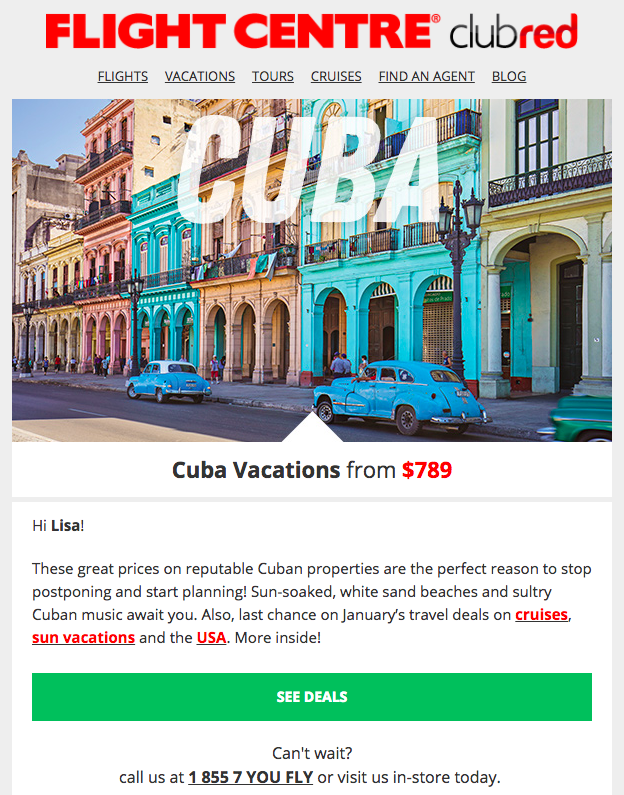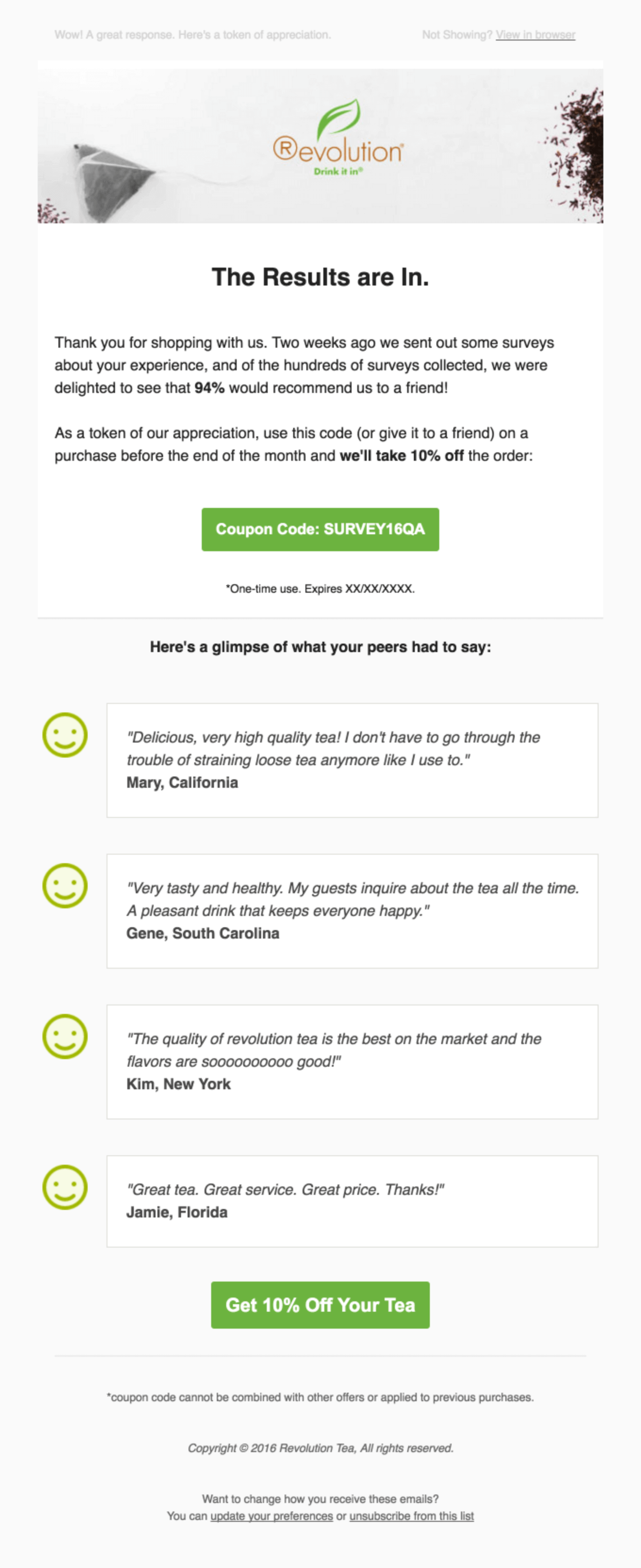The Psychology of a Great Subject Line
In email marketing, it all starts with a subject line. That small line of text is the first thing subscribers read, and it often dictates whether or not your message is opened.
About 47% of subscribers say they weigh the decision to “read it or leave it” based on the subject line alone.
Given the importance of subject lines, it’s easy to see why marketers work to craft the perfect ones. To help in your quest for the perfect subject line, here are four tips that use psychology to compel subscribers to open your email:
1. Get personal
One of the best ways to get subscribers to open your email is to personalize the message. You need to convey your connection to a subscriber right away in the subject line.
Personalization helps subscribers focus on what’s important to them and tune out the rest of the noise. Psychologists call this the “cocktail party effect.”
At a cocktail party, people are able to focus on one, personal conversation without being distracted by the mass of people in the room. The same holds true for email. Subscribers pay attention to the messages that are personalized and ignore the rest of the clutter.
Here’s a great example of a personalized subject line and email from Flight Centre. Not only does the subject line contain the subscriber’s first name, but so does the body of the email. In addition, the suggestions inside the email are based on the subscriber’s most recent website searches for vacations in Cuba.


Tips to get personal:
- Go beyond adding a subscriber’s first name to the subject line and use personalized content throughout the email.
- Set up data collection points so you’re constantly collecting information about your customers that can strengthen your email content.
- Personalization is hard to do at-scale, so segment your email contacts by interest, past purchases, location, sex, job title or age to send more targeted emails.
2. Ask a question
Try asking subscribers a question in your next subject line. Why? Humans are driven to answer questions. If we don’t know the answer, we’ll search for it.
Not knowing the answer to a question causes “a sort of irritation and tension that begs for closure,” according to a psychological concept known as the Zeigarnik Effect.
For example, what do you do when you hear a song but can’t remember the artist? You grab your phone and look it up, right? You had to find the answer to your question. If you didn’t, it would bug you all day.
You can apply that same kind of psychology to your subject line. Ask a question that subscribers have to open your email to answer.
Here are some great examples. Both eBay and CoSchedule pique curiosity with these questions and provide the solutions inside their email.

Tips to ask a question:
- Keep the question short. Research shows 65 characters is the sweet spot for a subject line.
- The subject line asks the question, while the body of your email should provide the answer.
- Asking a question in the subject lines requires pre-planning. Think of the question first and design the rest of the email to fit.
3. Use social proof
Consumers make decisions based on what others are doing. In other words, subscribers are compelled to buy something because “everyone’s doing it.” It’s a psychological phenomenon called social proof.
How can you weave social proof into your subject line? Focus on testimonials.
Show subscribers what their peers think of your product by highlighting positive reviews and customer feedback.
Psychology aside, there’s research that shows how powerful testimonials can be. Eight-eight percent of consumers trust product advice from friends and family and 66% say they trust online reviews written by customers, according to Nielsen Research.
Create an email that focuses on what others are saying about your product. Here’s a great example from Revolution Tea that highlights four reviews from customers. The subject line might read, “See what your friends think of Revolution Tea,” or “Why our customers love our tea, and you will too.”

Tips to use social proof:
- Highlight reviews from real clients. Never make up reviews.
- Consider using images in your email of clients actually using your product or service.
- Use your subject line to promote the testimonials inside your email.
- Try to get reviews or testimonials that speak to specific products rather than general feedback. Specifics help subscribers make decisions.
4. Offer exclusive deals
Exclusive deals make consumers feel special; like they’re part of an elite group. This sense of belonging is a psychological necessity, according to Maslow’s Hierarchy of Needs.
Maslow says humans are wired to meet certain needs, one of which is being part of a group or social network. You can appeal to subscribers’ urge to belong in your next email.
Try creating a VIP club that receives special promotions or gives a certain segment of your subscribers insider access to new products or discounts.
Wayfair, an online furniture company, used this subject line to offer a one-of-a-kind-deal to a subscriber.

You can also incorporate an interactive experience into your email to really double down on the psychological effect on your audience’s interest. Offer them an exclusive, mystery deal that they have to interact with to reveal, like the Scratch-it seen below. Tips offer exclusive deals:
- Make the deal or offer worthwhile. An exclusive offer should live up to the hype.
- Use words like “exclusive” or “VIP” in the subject line so subscribers can identify with it immediately.
- Use exclusive offers sparingly. If you send too many “exclusive deals” it will lose its effectiveness.
- You don’t have to send exclusive deals to everyone on your list; segment your contacts and spread the deals around.
Wrap up
Crafting a must-read subject line isn’t easy. Marketers have spent a lot of time and effort dissecting tactics that work, but understanding a little psychology can put you on the right track.
As you create subject lines, take the time to test them. See if your psychology-based subject lines are more effective than those without. Run split tests before you email an entire segment to make sure subscribers respond. Eventually, using psychological concepts in your subject line will become second nature.
Grow your business and total sales





